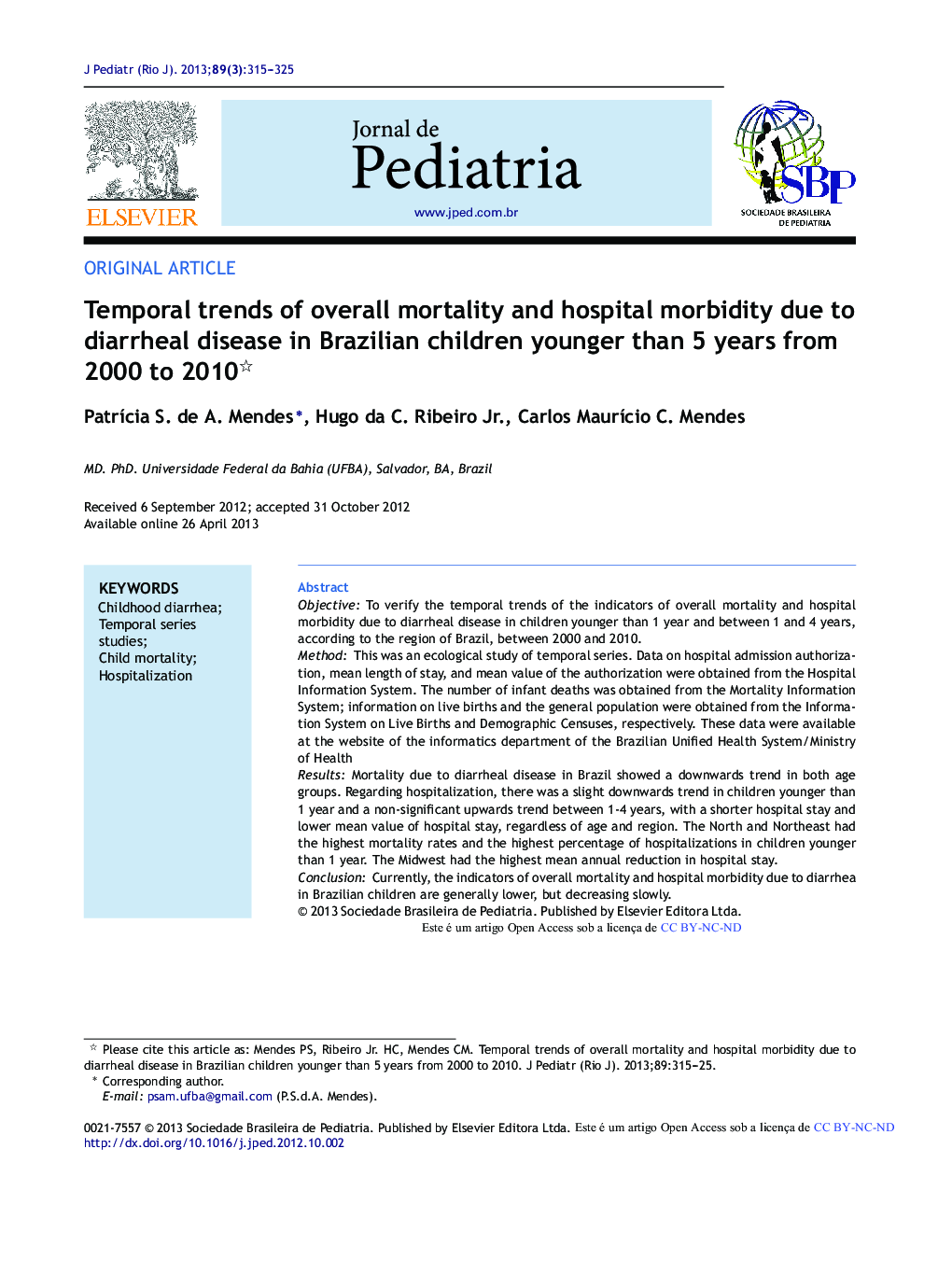| Article ID | Journal | Published Year | Pages | File Type |
|---|---|---|---|---|
| 4154180 | Jornal de Pediatria | 2013 | 11 Pages |
ObjectiveTo verify the temporal trends of the indicators of overall mortality and hospital morbidity due to diarrheal disease in children younger than 1 year and between 1 and 4 years, according to the region of Brazil, between 2000 and 2010.MethodThis was an ecological study of temporal series. Data on hospital admission authorization, mean length of stay, and mean value of the authorization were obtained from the Hospital Information System. The number of infant deaths was obtained from the Mortality Information System; information on live births and the general population were obtained from the Information System on Live Births and Demographic Censuses, respectively. These data were available at the website of the informatics department of the Brazilian Unified Health System/Ministry of HealthResultsMortality due to diarrheal disease in Brazil showed a downwards trend in both age groups. Regarding hospitalization, there was a slight downwards trend in children younger than 1 year and a non-significant upwards trend between 1-4 years, with a shorter hospital stay and lower mean value of hospital stay, regardless of age and region. The North and Northeast had the highest mortality rates and the highest percentage of hospitalizations in children younger than 1 year. The Midwest had the highest mean annual reduction in hospital stay.ConclusionCurrently, the indicators of overall mortality and hospital morbidity due to diarrhea in Brazilian children are generally lower, but decreasing slowly.
ResumoObjetivoConhecer as tendências temporais dos indicadores de mortalidade geral e morbidade hospitalar por doença diarreica em crianças menores de um ano e de um a quatro anos, conforme as regiões brasileiras, entre 2000 e 2010.MétodoEstudo ecológico de séries temporais. Os dados sobre Autorização de Internação Hospitalar, média de permanência e valor médio dessa autorização foram obtidos do Sistema de Informações Hospitalares; o número de óbitos infantis foi adquirido no Sistema de Informações sobre Mortalidade; as informações sobre os nascidos vivos e a população geral foram obtidas do Sistema de Informações sobre Nascidos Vivos e dos Censos Demográficos, respectivamente. Dados disponíveis no endereço eletrônico do Departamento de Informática do Sistema Único de Saúde/Ministério da Saúde.ResultadosA mortalidade por diarreia no Brasil evidenciou tendência de decréscimo desacelerado em ambas as faixas etárias. Quanto à hospitalização, houve tendência decrescente discreta nos menores de um ano e ascendência insignificante entre 1-4 anos, entretanto, com menor permanência e valor médio de internamento, independentemente da idade e da região. Registraram-se no Norte e Nordeste os maiores coeficientes de mortalidade e maior porcentagem de internação nos menores de um ano. O Centro-Oeste apresentou maior redução média anual do tempo de permanência hospitalar.ConclusãoAtualmente, os indicadores de mortalidade geral e morbidade hospitalar por diarreia em crianças brasileiras encontram-se, de forma geral, mais baixos, porém lentamente decrescentes.
